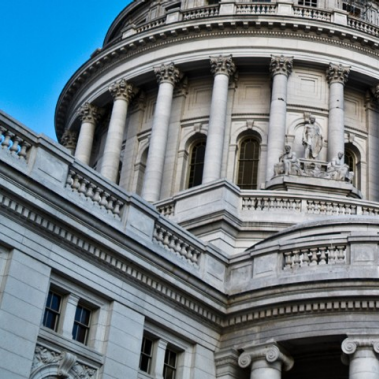This article was first published on April 14, 2020.
Authored by Douglas J. Elliott, Partner, Financial Services
In the midst of the pandemic horror surrounding us, it is difficult to focus on the economic and financial policy choices facing our leaders. However, it is also necessary to do so, in order to reduce the total damage. Overall, I am comfortable with the broad shape of the economic policy response, which combines massive quantities of fiscal stimulus with major monetary policy actions to provide further stimulus and to ensure acceptable levels of liquidity in the markets and the larger economy. Regulatory and supervisory actions have been significant as well, encouraging financial institutions to lend and invest.
Despite my strong approval of the overall policy direction, I do have a number of major concerns that I hope will be alleviated by future policy actions to fine tune or supplement what has been done to date.
My Top 5 list of concerns, in no particular order, are:
- The risk of "start and stop" economic/health policies
- Excessive levels of financial leverage in economies around the world
- A return of the Euro Crisis and other sovereign debt problems
- The medium-term temptation to ramp up inflation
- Excessively weak credit standards and the creation of zombie companies
The risk of “start and stop” economic/health policies
Perhaps the most immediate danger is that overall policy on the pandemic flips back and forth between a focus on tackling COVID-19 and restarting the economy. The right answer is to conduct a policy that appropriately balances the health and economic dimensions while responding to new information and changing circumstances. The risk is that we overreact to one side, create new problems on the other, and then overreact to that. The most obvious version would be to release the social distancing restrictions too early in an effort to reduce the economic damage and then rush to reimpose restrictions when the infection reignites. In the worst case, we could go through several rounds of this. It will be much better if we can design approaches to a restart that protect the most vulnerable and hold down total infection levels while allowing substantial amounts of economic activity to resume. There will be trade-offs, but they should be intelligently balanced, despite the political obstacles that will doubtless exist. Jumping from one extreme to the other would be far more harmful.
Excessive levels of financial leverage in economies around the world
Throwing substantially more debt into a system with high levels to start with brings many risks. There is probably not another option in the short run, but policy needs to shift as quickly as possible to replacing some of this debt with equity. Paying down debt as the recovery takes hold is also desirable, but there are strong limits on how much this can be done without undermining the economy. Appropriate restructuring of balance sheets will be a better approach in many cases.
This primarily applies to private debt-to-GDP ratio sector businesses, but there is room for some restructuring globally in the public sector as well. In some cases, more can be done with privatization of government-owned businesses. In a few cases, countries will simply not be able to handle their total debt burdens and debt instruments will have to be restructured, creating losses for debt holders, whether they be public or private.
A return of the Euro Crisis and other sovereign debt problems
I am specifically worried by the difficulty some nations will have, particularly within the Eurozone, in managing even higher levels of debt. Italy has received the most attention, as an economy that is “Too Big to Fail,” the economy has been hit horribly by COVID-19, and will face many challenges in pulling out of the hole it is in. At the beginning of the Euro Crisis, Italy’s debt-to-GDP ratio was about 115 percent, versus 85 percent for the Eurozone as a whole. Italy starts this new crisis at roughly 135 percent, while the Eurozone as a whole is only up to 86 percent. So, Italy starts in a worse debt position this time around and has even more political problems than last time. That said, nominal interest rates are lower this time around, which reduces the running costs of maintaining this debt level.
During my years at the Brookings Institution, I studied the Euro Crisis closely. I always believed that the strong likelihood was that Europe would pull through, but I worried intensely about the significant risks. In fact, Europe’s leaders walked to the edge of the cliff five times and each time managed to look down and step back to reach the necessary compromises. Muddling through is still my base case for any repeat of the Euro Crisis, but I think the probabilities of a bad outcome have gone up.
Nor is Europe the only area where sovereign debt crises could blow up. Most continents have one or more candidate countries for such problems.
The medium-term temptation to ramp up inflation
One way out of debt problems is to inflate the currency to reduce the real economic value of debt, making it easier to repay. This might be sensible if done on a modest basis, but can easily get out of hand and lead to inflation levels that do real damage. Look back at the 1970s and 80s if you wish to see how costly this can be. Even if wide economic harm is avoided, there are massive distributional effects between savers and borrowers that must be considered.
I don’t see a big inflation concern in the next couple of years in the advanced economies, but there is a real potential as we go out further. This potential is enhanced by the fact that most countries have not seen a problem with excessive inflation in 30 or so years. Politicians may find it easy to downplay risks that have not occurred for so many years.
Excessively weak credit standards and the creation of zombie companies
Right now, governments are making, guaranteeing, or encouraging very large sums of loans with weak or non-existent credit underwriting. That may be the only choice at the moment, but it is not a long-term solution. Propping up companies that cannot survive in the longer run without continuing support becomes a real drag on an economy. Look at Japan’s “lost decade,” now running well over a decade. We need to transition to providing liquidity support, or sometimes equity infusions, only to companies with reasonable prospects for the future. Even in the shorter term, there are interesting ideas such as the suggestion of Agustin Carstens (General Manager of the Bank for International Settlements - BIS) of government loans tied to the amount of taxes paid by a firm in previous years. This has the advantage of directing funding towards firms that have proven they can make profits in at least the good times.
Douglas Elliott is an Oliver Wyman partner focused on the intersection of Finance and public policy. He was formerly a scholar at the Brookings Institution and is the author of the book, Uncle Sam in Pinstripes: Evaluating US Federal Credit Programs.






